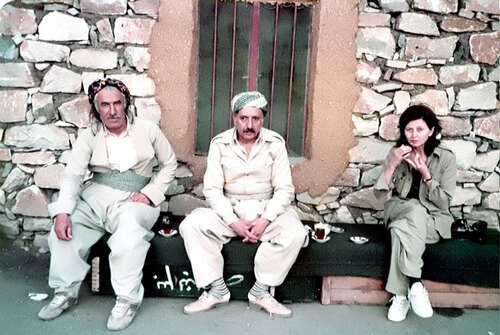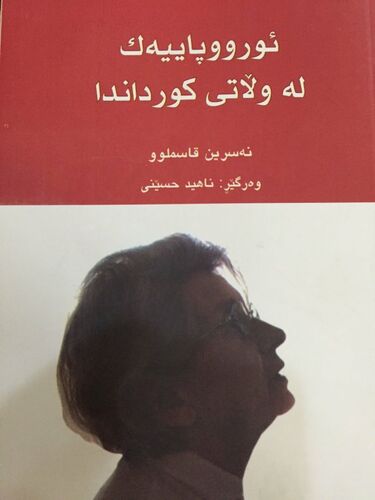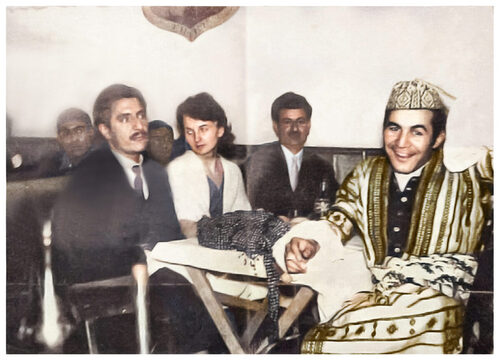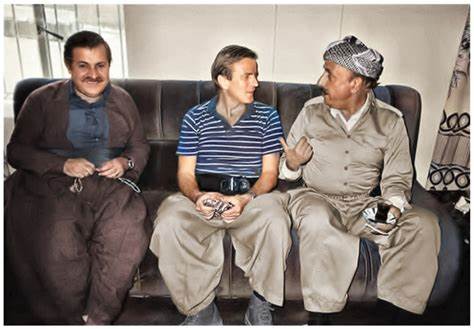In the first part, we discussed Nasrin Qassemlou's book from a cultural perspective.
The second part of the article provides interesting information on the form of politics and political work of a European in Kurdistan. Until decades ago, Europeans were mostly acquainted with the Kurds in two ways. First, through the writings written by orientalists, who used their incomplete experience and several days of travel to Kurdistan as the foundation of their knowledge of the Kurds. They mostly cared about normal cultures and limited their knowledge in this way. Obviously, such recognition is incomplete. Such examples can be found in the writings of the French Demorgan on the Kurds. For example, he writes about Sardasht who are people living in caves, and that they use straw as underlay. Perhaps when Demorgan passed by Sardasht, such a family lived in a cave, but this is a false picture of parts of Kurdistan written by a European. However, Demorgan took all the photos with the camera of Aziz Khan Sardar and wrote underneath with the camera of Lord Aziz Khan commander of Bokan, and did not know that the lord is originally from Sardasht.

In the book, politics in Kurdistan becomes part of a European's life. Politics with a friend of one of the rare Kurdish leaders who has worldwide fame.
From the very beginning of her arrival in Iran, Nasrin Qassemlou has been learning the principles of politics in Iran. Her narrative indicates the existence of two general political lines in Iran. One is the policy pursued by the monarchy and its oppressive institutions, and the other is the policy and political actions of the opposition parties to the monarchy.
In the first step, Nasrin Qassemlou describes the political movement of Kurdish politicians in Tehran. In other words, she refers to the existence of a secret organization of the Kurdistan Democratic Party of Iran (KDP) that is active in Tehran and is cooperating with other leftist and egalitarian forces in Iran. He recounted Dr. Qassemlou's movements and actions at that time and became one of the people who performed her duties in this secret network.

What is important in this part is that the European author of the book talks about the cooperation of different secret forces. For example, she talks about the secret work of Kianuri, the leader of the Tudeh Party, and Dr. Qassemlou, and points out that they may not have agreed much. She mentions the presence of Smayil Qassemlou, Ghani Bloorian, and many other Kurdish figures who played a role. She describes how the repressive system of the Savak puts Kurdish political activists under pressure and control and they had to change places every time and continue their secret work.
What Nasrin Qassemlou tells us about her personal experience and organizational work in Tehran is worthy of consideration. Despite all the pressure from the intelligence agencies, due to the strength of the work and efficiency of the political activists of the Democratic Party led by Dr. Qassemlou, the structure of their organization suffered the least damage. Nasrin Qassemlou explains that secrecy was given to a very high degree and even the protection of political and party secrets reached a level where everyone knew only the duty and information that belonged to them so that even if they were arrested, no one else would be detained. That is why, she says, many of my questions from the doctor about the future program of the organization remained unanswered.

Another part of Nasrin Qassemlou's political work dates back to her time in the East part of Kurdistan. She describes the presence of the Peshmerga forces, party leaders, and cadres in Kurdistan. Here, contrary to the propaganda of the Kurdish enemies and opponents, the European language of Nasrin reveals the fact that the relationship between the people and the Kurdish revolution is amazing, loving, and helpful.
In addition, she describes the monarchy militarism system in Kurdistan and brings up all the obstacles and dangers that have been on the path of the Kurdish fighters and she has overcome many of these obstacles and dangers.
Another part of Nasrin Qassemlou's political memory goes back to her political activities in Iraq.
She and many other cadres and members of the Democratic Party are active in Iraqi Kurdistan and Baghdad. This section contains useful information to understand the political system prevailing in Iraq, the dangers of political work in the country, and the perseverance of Kurdish freedom fighters. In addition, she critically discusses the cooperation, opposition, and rivalry of Kurdish political forces from a European perspective.

The discussion of this book goes much further and as the last important part of this note on Nasrin Ghassemlou's book, I will refer to the assessment of Kurdish political figures who supported and opposed Dr. Ghassemlou.
Although Nasrin Ghassemlou was the wife and comrade of Dr. Ghassemlou, she mentions dozens of times in her writings how much she loved him, but she did not evaluate his personality as a lover. She even looked critically at her husband as a leader, recording his good and bad behavior. She also mentioned many other important Kurdish political figures and Kurdistan politics in general. For example, Nasrin Ghassemlou's discussions about Jalal Talabani and Mullah Mustafa Barzani are noteworthy. The kind of cooperation and consensus between these leaders, Dr. Ghassemlou, and the East part of the Kurdistan movement is also worthy of political analysis.
Among the political figures of the East part of Kurdistan, the life, thoughts, and activities of these figures in the writings of Nasrin Ghassemlou can reveal new aspects of their thoughts and views. She mentions Ahmad Towfiq, Sadiq Anjiri Azar, Ghani Blurian, Smayil Ghassemlou, and many other figures and adds a new chapter to Kurdish political history.








